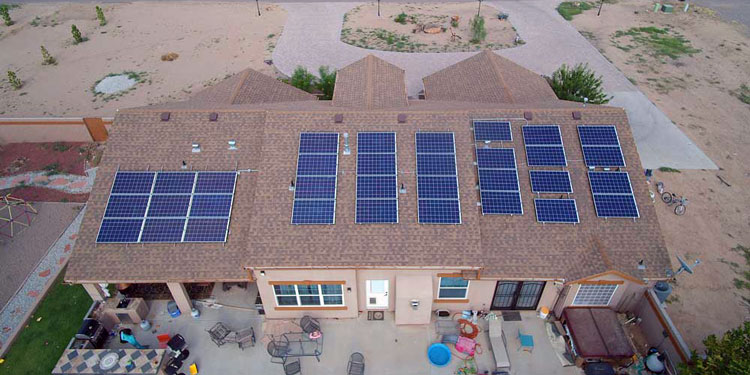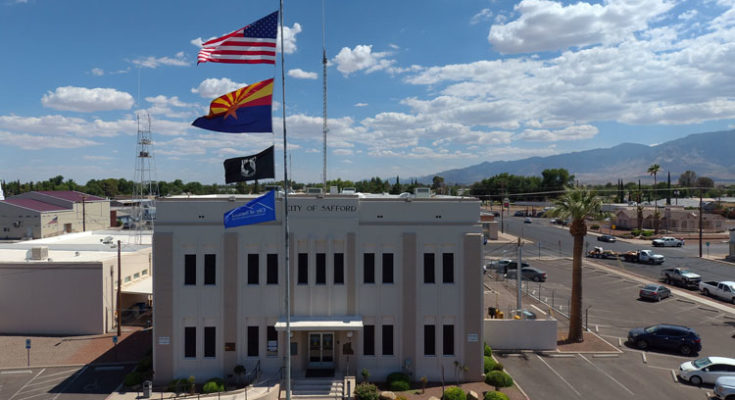By Jon Johnson
SAFFORD – Residents of Safford are invited to weigh in on significant proposed changes to city utility rates and the solar credit program during a public hearing scheduled for Oct. 13 at the Safford City-Graham County Library, located at 808 S. 7th Ave. The hearing begins at 6 p.m. The council will hold a final vote on the proposals during its meeting on Oct. 27 at the same venue and time.
The changes stem from a comprehensive five-year Utility and Service Rate Study, recently presented to the Safford City Council by Finance Director Troy Bingham. The study recommends rate increases for water, wastewater, sanitation, and natural gas services to ensure long-term financial sustainability, while proposing a notable reduction in electricity rates. In a unanimous vote during a recent meeting, the council expressed its “Intent to Increase Rates” for the affected utilities, paving the way for these adjustments.
Key rate adjustments over five years
Under the study’s recommendations, most utility services would see gradual hikes, with natural gas facing the most substantial increases:
- Natural Gas (Residential): The monthly service availability charge is expected to rise from $15 to $27.43 by 2029. Delivery charges per MCF (thousand cubic feet) would increase from $5.10 to $9.33.
- Natural Gas (Commercial): Similar percentage increases apply, scaled to business usage levels.
- Water, Wastewater, and Sanitation: Incremental increases are proposed, though specific figures were not detailed in the overview; full breakdowns are available in the study.
- Electricity: In a welcome contrast, rates are set to decrease from just over 7 cents per kWh to under 5 cents per kWh by 2029, reflecting efficiencies in the city’s power operations.
These phased changes aim to balance operational costs with affordability for residents and businesses over the next five years.
Updates to the solar credit program

A highlight of the recent council discussion was the overhaul of Safford’s solar incentive program, which shifted to a hybridized net metering model. Currently, the city offers one-to-one net metering credits every month for excess solar generation. The proposed system maintains this during the billing month but introduces a 25% credit for any true excess power at month’s end, calculated on the 20th of each month.
Key details include:
- Full Credits During the Month: Solar producers will continue to receive a complete kWh credit for every kWh exported to the grid, addressing the common daytime overproduction and nighttime draw from the grid.
- Excess Handling: Only net excess after monthly balancing qualifies for the reduced 25% credit rate.
- New Administrative Fee: A $6 monthly fee will support program administration.
- Transition for Existing Users: The city plans to purchase accumulated credits from current solar customers before implementing the new model, thereby minimizing disruptions.
This approach differs from the Arizona Corporation Commission’s (ACC) real-time export crediting, which values excess at about 25% of retail rates and ended full net metering in 2016 (with grandfathering for existing systems). For most Safford solar users, the change is expected to have a negligible impact; however, those with systems designed to bank seasonal credits (e.g., building up in cooler months for summer peaks) may experience adjustments.
The proposed solar model preserves strong incentives for renewable energy adoption while aligning with broader utility reforms.
How to get involved
The public is encouraged to review the full Utility and Service Rate Study, including detailed recommendations and specifics on the solar program, available online through the city’s resources. Attendance at the Oct. 13 hearing provides an opportunity to voice support, concerns, or questions directly to the council before the final decision on Oct. 27.
For more information, contact the Safford Finance Department or visit the city’s website. These changes represent a pivotal step in modernizing Safford’s utilities—your input could shape their future.








